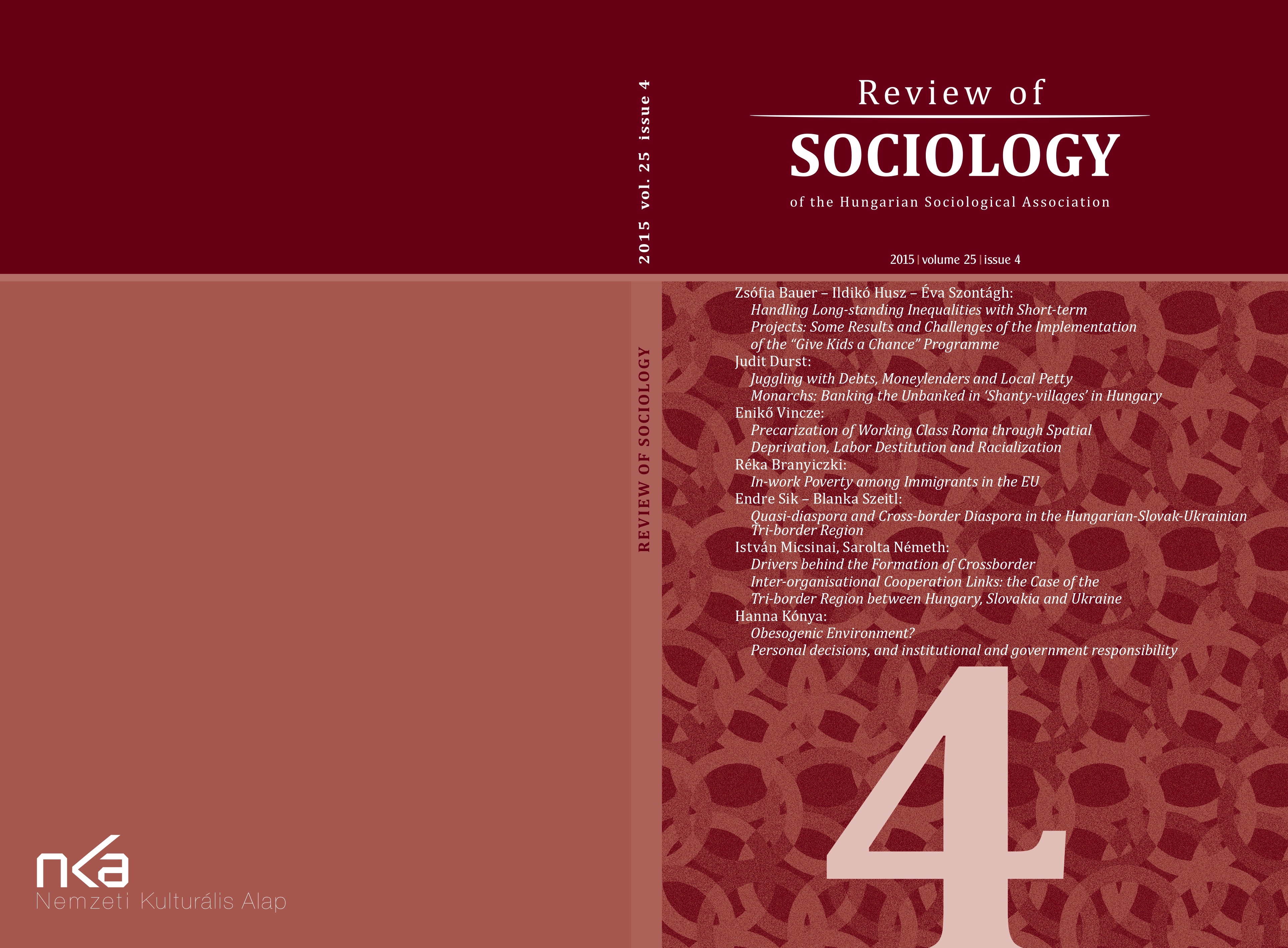Juggling with Debts, Moneylenders and Local Petty Monarchs: Banking the Unbanked in ‘Shanty-villages’ in Hungary
Absztrakt
Indebtedness as a global phenomenon has attracted much attention both in public discourses and in academia in recent years. In Hungary, however, up to date social scientists have not paid considerable interest to studying debt. Drawing on long-term ethnographic fieldwork in rural northern Hungary, in this article I explore the financial portfolios of the poor in two settlements and their debt relations. I attempt to show how different forms of debt (formal and informal) are used, perceived, and valued; what kinds of different meanings are attached to them; and how they interrelate to each other. I will show the magisterial juggling of the poor with income scarcity, and the wizardry with which they make a living on twenty-two thousand forint (60 $) a month, the Hungarian equivalent of the “$2 a day” global poverty benchmark. I will attempt to shed light on the role of informal moneylending in this puzzling story. I will explore how the cash-poor invent new ways (by appropriating and adjusting established ones; among others, subprime lending) to generate regular income. Whilst comparing the practices of formal and informal financial institutions towards the poor, I argue that informal/‘illegal’ lenders fill the gap, the economic niche, left empty by formal/legal financial companies, to “bank the unbanked”. Through this process, however, old dependency structures are reconfigured, new patronclient ties are formed and community wealth is redistributed – to further impair the poorest of the poor.





